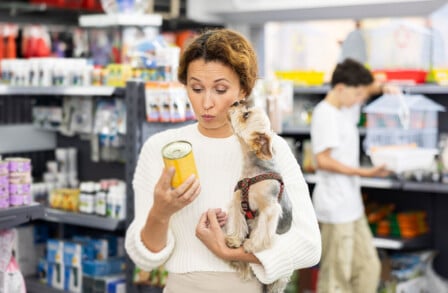Boost your nutritional knowledge with our quiz prepared by a nutrition specialist member of the CAVN.

NutriQUIZ
A complete diet provides all the essential nutrients, but could still be unbalanced; if the ratios between the essential nutrients are ideal, then the diet can be considered complete and balanced. A classic example is the ratio between the minerals calcium and phosphorus (Ca:P) which needs to be at least 1:1, but not higher than 2:1 for adult dogs and cats. Micronutrients are defined as those required in the diet in mg/kg or parts per million (ppm). Depending on the ingredients used or the...
Sponsored by


Dietary fibre has several beneficial effects on the digestive system and on general health. For instance, it promotes regular intestinal transit, helps reduce the risk of diarrhea and constipation, and regulates blood sugar and cholesterol levels.
Dietary fibre is a part of the plant that corresponds more specifically to the plant cell wall. It is characterized by its resistance to enzymatic digestion and absorption in the small intestine, but is completely or partially fermented by the...
Sponsored by


There are published nutritional profiles (or standards) for gestation and lactation, growth and adult maintenance for dogs and cats. However, there are no specific nutritional profiles to define how diets should be designed for senior or geriatric pets, or for working dogs holding a wide range of jobs. Therefore, nutritional needs should be assessed on a patient-by-patient basis and they should take into consideration all of the animal, dietary and feeding management factors for the current...
Sponsored by


As the largest organ with active metabolic and high nutritional requirements, the skin plays many essential roles: it protects against the environment, helps to maintain hydration and thermoregulation, and provides sensations of both touch and temperature. Maintaining a healthy skin barrier is critical to overall health, and nutrition can play a vital role in providing essential nutrients to maintain skin barrier function and hair growth.
Essential nutrients that support a healthy skin...
Sponsored by


Assessing whether a pet food is appropriate for a dog or cat isn’t always as straightforward as it should be, and when it comes to our pet patients, one size may not fit all. A pet food label contains some information which can help with a preliminary assessment on whether a food is appropriate or not; it is important to be familiar with the information that is included (and not included) on these labels to do a quick assessment yourself, or to coach pet owners on what to look for when they...
Sponsored by


Weight loss plans can, at times, seem daunting. There are several steps that are part of a successful weight loss plan including assessing the patient, communicating with the pet owner about the need for a weight loss plan, making an appropriate diet recommendation and creating a follow-up plan. In order to create a successful plan, there are several math equations which can be used to help set goals and targets for ideal weight, calorie requirement, food amount, treat budgets, and weight loss...
Sponsored by


When a client asks, “How much should I feed my pet?” do you know how to calculate the answer? Calculating feeding amounts could be considered similar to drug dosages; in excess, we exceed energy needs, possibly initiating or influencing a disease state, such as obesity. Conversely, by supplying insufficient energy we may not be able to complete daily functions, creating a nutritional deficiency. Much like calculating drug dosages, nutritional math can provide us with more specific information...
Sponsored by


Pancreatitis is a commonly encountered disease in small animal patients with a wide range of clinical severities and duration of illness. Acute pancreatitis involves inflammation that typically resolves following withdrawal of the provoking cause, while chronic pancreatitis involves irreversible disruption of the pancreatic architecture. Historically, standard recommendations for the management of acute pancreatitis included “resting the pancreas” by withholding food until symptoms resolve....
Sponsored by


In its 2022 pet population survey, the Canadian Animal Health Institute (CAHI) estimated that Canadian dog and cat populations reached 7.9 million and 8.5 million, respectively. Of these, one-third are considered senior animals. The American Animal Hospital Association (AAHA) considers cats to be senior when they are over 10 years old. For dogs, life expectancy varies considerably, depending on breed and size. However, a dog is considered senior when they reach 75% of their life expectancy....
Sponsored by





 05:00 min
05:00 min








